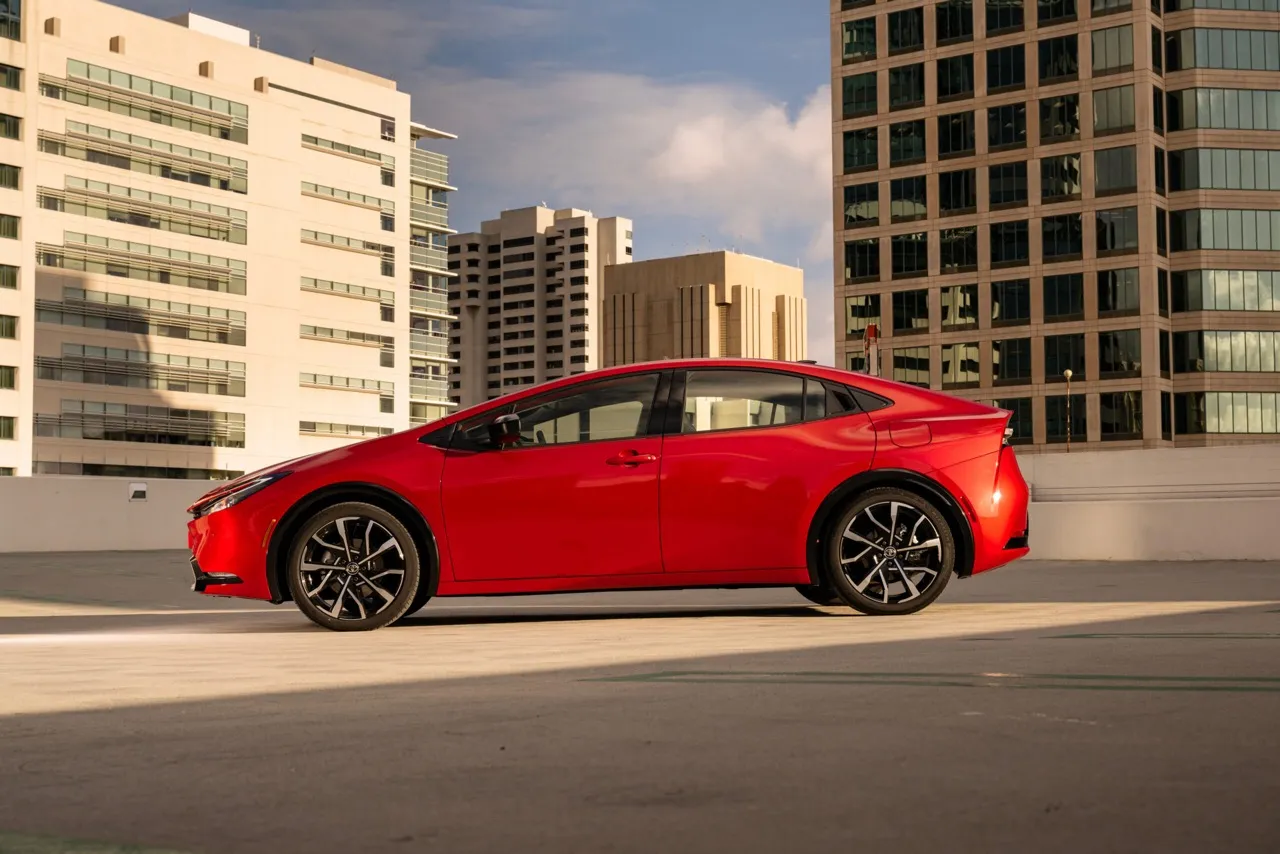Surely you’ve heard? The redesigned 2023 Toyota Prius looks good. The hybrid icon hatched out of its egg into something that draws eyes instead of sighs. The fifth-generation hatchback is the wedge of women’s footwear instead of the clog it had once been. The better to attain a 57-mpg combined rating from the EPA, and an all-wheel-drive version that runs to 54 mpg combined.
This legend redrawn arrived too late to be considered for last year’s award, similar to the Honda Accord and Honda Pilot, but it is more than worthy to be one of the nine finalists for The Car Connection Best Car To Buy 2024. Aside from its calmer, more cohesive design, the Prius’s interior is decluttered and streamlined, though the recessed instrument cluster set near the windshield strains eyes, similar to Toyota’s underwhelming bZ4X electric crossover.
Toyota redid the Toyota Prius Prime plug-in hybrid as well, equipping it with an available solar roof that might best appeal to those in the sun belt. The Prius Prime upgrades to a much larger 13.6-kwh battery pack and a 161-hp front motor tied to a 2.0-liter inline-4 gas engine. It can travel 45 miles on electric juice alone, then gets 52 mpg combined when it runs out of battery charge. It’s the cleanest and quickest Prius, with a 0-60 mph time of 6.6 seconds, but it’s not necessarily the best Prius.
2024 Toyota Prius
The Prius Prime checks in at over $40,000, diminishing its appeal. The Prime eats up some Prius vertical cargo space, slimming the hatch area down from 23.8 to 20.3 cubic feet of space. That’s minor. We think the regular Prius drives better.
“This time around, the Prius Prime needed to show that Toyota saw it as the better of the two Prius models—the one reaching ahead to the future, not a concession to regulators,” said Bengt Halvorson, the editor of Green Car Reports, our sister publication specializing in hybrids, electrics, and alt fuel. “I’m not convinced that it wasn’t just the latter again. And it doesn’t drive as responsively and smoothly as the hybrid Prius.”
The Prius without a plug makes big strides in in both ride and handling and in acceleration. A 2.0-liter inline-4 couples to an electric motor and battery pack that combine for a net of 194 hp, some 73 hp more than the previous Prius. It can scoot to 60 mph in 7.2 seconds (or 7.0 seconds with AWD).
Its low stance and arcing roofline creates some compromises to interior space compared to its predecessor, however. Taller people must duck and spin into seats and headroom gets cramped in back. The front seats could use more support, the small diameter steering wheel and recessed gauge cluster create an odd seating angle, and road noise fills the cabin at speed.
But for $28,745 including destination for the base 2024 Toyota Prius LE, it is a value-loaded proposition with one of the lower costs of ownership of any new non-electric car on the market. It comes with automatic emergency braking with cyclist and pedestrian detection, adaptive cruise control, active lane control, and blind-spot monitors, but we’d recommend the XLE and its power driver seat, keyless start, and heated front seats. Its 19-inch wheels shave fuel economy down to 52 mpg combined. The base AWD Prius still rocks at 54 mpg combined, and it only costs an extra $1,400.
Is the reborn Prius vital enough in these electric times to take home our Best Car To Buy 2024 award? Our editors will decide the winner here as well as at Motor Authority and Green Car Reports on Jan. 3, 2024.
